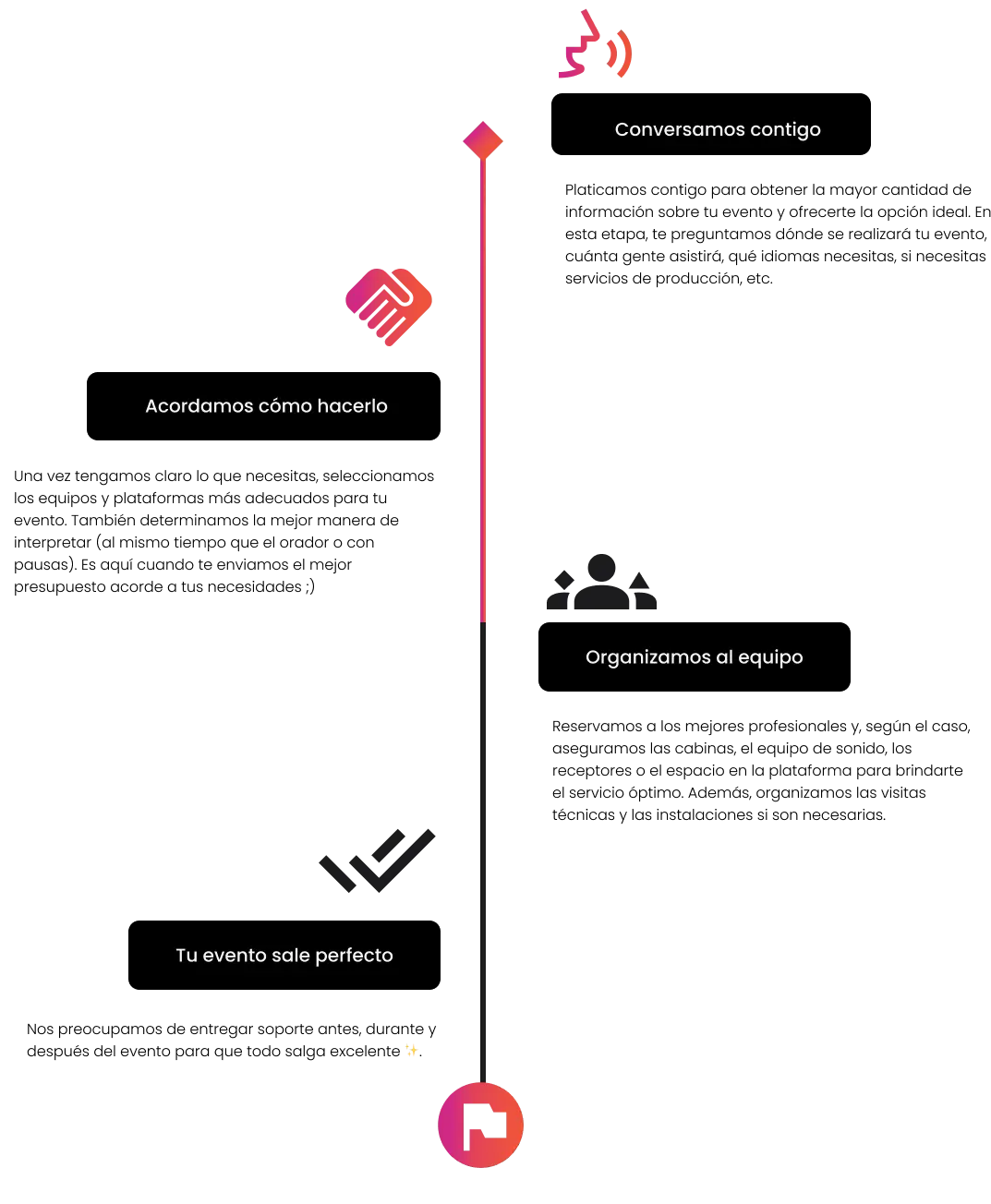Interpretación simultánea híbrida/presencial
Equipos y personal para eventos presenciales y online de cualquier tamaño.
Traducciones Remotas Producciones Remotas
Traducciones Remotas Producciones Remotas
Interpreters in all languages, superior equipment, and full accessibility with professional technical support.

With our insight, you win.

More than a language agency, more than a production company. All-in-one solutions for your event without complications.

Forget about the coordination problems between audiovisual teams and language barriers. Here, we all work towards the same goal and at the same pace.

Native interpreters of English, German, French, Portuguese, and more. Legal, medical, and other experience.

(Unlike many), we are experts in combining technology and communication between languages. Try us out! Mix our services however you like. If you need it, we can manage it.

In our culture of being "all in one," we provide sustainable alternatives that promote inclusion and accessibility, so that everyone can benefit from our comprehensive services.

We are the new generation of interpreters, experts in all related technology.
Our dedication shows




Our dedication shows








They already trusted us and hit the mark

Simultaneous interpretation is real-time oral translation: while the speaker is talking, the interpreter reproduces the message in another language with a ~1 second delay, achieving smooth communication without pauses.
A standard setup includes soundproof booths, digital consoles for interpreters, headset microphones, infrared or Radio Frequency transmitters, receivers with headphones for the audience, and a microphone system for speakers if the venue does not provide it.
The price varies depending on languages, number of booths, days of use, and whether the event is in-person, hybrid, or remote. Virtual rooms (Zoom, Webex, etc.) only require the platform and reduce costs; portable equipment is charged per day and by the number of receivers. Transportation and installation are usually included in the final quote.
RSI is carried out through cloud platforms: interpreters work from remote booths and listeners receive the audio on their devices. It is ideal for webinars, hybrid events, or when the logistics of physical booths are costly.
AIIC (International Association of Conference Interpreters) recommends two interpreters per booth and per language for events longer than 30 minutes; they take turns every 20-30 minutes to maintain accuracy and protect their voices. Short events (< 90 min) can accommodate a single professional, but the optimal approach is always to work in pairs.
The booths provide sound insulation, a direct view of the stage, and comply with ISO 4043 standards; they ensure audio quality and the concentration of the interpreter. Portable equipment or whispering is useful for visits or small groups, but not for conferences with multiple languages.
Zoom and other virtual rooms support multilingual audio channels; simply activate the "Interpretation" option and assign each interpreter their channel. For broadcasts to streaming platforms like YouTube/RTMP, audio sources are combined and separate links are generated by language.
At Remote Translations, we use digital systems and headsets with closed signals to avoid interference and audio leaks. The technical team monitors levels in real time. We are also willing to sign confidentiality agreements, which extend to the interpreters and all staff.
AI is advancing, but it still does not match the cultural sensitivity, nuance reading, and confidentiality that certified professionals provide. Even in 2025, high-level organizations and companies continue to rely on human interpreters to ensure quality and security.
Google Meet has just launched a real-time voice translation feature powered by AI. It’s perfect for 1-on-1 video calls or small teams and, for now, only covers a handful of languages. For multilingual conferences, technical speeches, or when cultural accuracy is critical, you will still need professional interpreters and dedicated equipment.